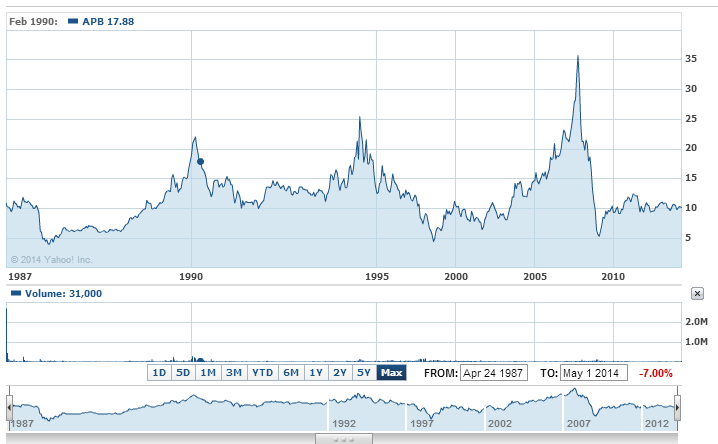Relatively solid performances in corporate earnings and economic growth suggest that equities markets should maintain the stable outlook that was largely expected at the beginning of this year. But when we look at the major stock benchmarks, the potential for significant upside remains limited. Both the SPDR S&P 500 Trust ETF (SPY) and SPDR Dow Jones Industrial Average ETF (DIA) are trading within striking distance of their all-time highs, so investors seeking gains based on the long-term growth outlook would do well to consider alternative avenues.
An excellent strategy in this type of environment is to look at closed-end funds (CEFs), which often traded at a discount to net asset values and create opportunities to gain exposure in companies that are difficult to reach through US exchanges. One of the best selections in this space is the Asia-Pacific Fund (NYSE:APB), which focuses on growth opportunities in emerging Asia. Key selections in the fund include companies like Skyworth Digital, Hyundai Motors, and the Bank of China, which cannot be purchased through US exchanges but are well-positioned to benefit from recent improvements in regional economic data.
Attractive Valuations in Key Sectors
Trading at a price-to-earnings ratio of 8.5 (and a price-to-book value of 1.1), APB has stabilized above the $10 mark and starts to look very cheap when we look at the stock’s historical range. Management’s strategy within the fund focuses mostly on the financial, information technology, and consumer discretionary sectors -- all of which should continue to be supported by the rising prospects for stronger earnings in Asian exporters. In South Korea alone, monthly trade data has shown that export figures have beaten analyst estimates in March and April -- with annual gains of 5.2% and 9%, respectively. This is significant for investors looking for CEF exposure in emerging Asia, as roughly 26% of the holdings in APB are tied to South Korean companies.
Broader growth numbers in China have been supportive, as well. Earlier in the year, there had been some questions in this area, as the country’s trade figures started to deviate from recent trends. This led to downward revisions in annualized GDP projections. But the data for Q1 came in relatively strong at 7.4%, which helped to assuage fears that the world’s second-largest economy was in danger of experiencing a hard landing.
Considering Alternatives
Positive surprises in these areas will start to filter into upside revisions in emerging Asia’s large caps in coming quarters. Typically, scenarios like this would lead investors to start considering instruments like the iShares MSCI Emerging Markets Index ETF (EEM) as a strategy for gaining exposure to rising regional growth. But the current market environment favors closed-end funds over traditional stock alternatives, given the fact that attractive discounts can still be found. In APB, we can see a strong name to watch as its holdings are highly diversified and focus on industry sectors that are in a good position to benefit from recent changes in the broader macroeconomic trend. Funds like this also offer US investors an opportunity to gain exposure to companies that cannot be found on US exchanges. Current valuations show APB showing at a 10.7% discount to NAV, but it looks as though this discount could start to narrow in the coming months.

